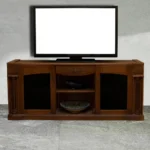In today’s digital world, additional USB ports are more crucial than ever. Devices like laptops, desktops, gaming consoles, and even smart TVs have limited USB ports. This limitation can hinder productivity, especially when users need to connect multiple peripherals like external hard drives, printers, keyboards, and mice. A USB splitter effectively solves this issue by expanding the number of available USB ports, allowing users to connect all their essential devices seamlessly.
USB Splitters solve this problem by providing more USB ports without compromising performance. In this article, we will explore what USB splitters are, how they work, their benefits, and what to look for when purchasing one. Whether you’re a professional, gamer, or casual user, understanding the value of USB splitters can greatly enhance your tech setup.
What Is a USB Splitter and How Does It Work?
A USB splitter is a device that allows a single USB port to connect to multiple devices. It operates by dividing the available power and data transfer capabilities of one USB port into multiple connections, typically 2, 4, or 7 additional ports. The splitter can be powered through the main USB connection or have an external power source to support more power-hungry devices.
USB splitters are available in different versions, such as USB 2.0, USB 3.0, and USB-C, each with varying data transfer speeds and power capabilities. Depending on your needs, you might choose one with faster transfer rates or higher power output for charging devices.
Benefits of Using USB Splitters
Expanding Connectivity
One of the main advantages of using a USB splitter is the ability to expand the number of devices you can connect to your system. This is particularly useful for users with limited USB ports, such as on ultrabooks or tablets. With a single splitter, you can connect multiple devices like flash drives, printers, and webcams simultaneously. Simplifying Cable Management
USB splitters help reduce cable clutter by consolidating multiple device connections into one hub. Instead of reaching behind your desk to access ports, you can centralize connections in one accessible location, making it easier to swap devices as needed.
Cost-Effective Solution
Rather than upgrading your device to one with more USB ports, a USB splitter offers a much cheaper alternative. This makes it an excellent option for budget-conscious users who want to maximize their current setup without spending excessively on new hardware.
Portability and Convenience
USB splitters are generally lightweight and compact, making them easy to carry around. Whether you’re working remotely or attending a meeting, a USB splitter can fit into any laptop bag, providing you with the flexibility to connect devices on the go.
Common USB Splitter Types and Features
When selecting a USB splitter, it’s essential to consider factors like power requirements, data transfer speed, and the number of ports. Here are the most common types of these and their key features:
USB 2.0 Splitters
These splitters offer a maximum data transfer speed of 480 Mbps and are sufficient for basic tasks such as connecting a mouse, keyboard, or printer. However, they may not perform well with high-bandwidth applications, such as transferring large files.
USB 3.0 Splitters
For those who need faster data transfer speeds, USB 3.0 splitters are ideal, with speeds up to 5 Gbps. These splitters are suitable for tasks like transferring large files between external hard drives and computers. Additionally, they are backward compatible with USB 2.0 devices, offering more flexibility.
USB-C Splitters
USB-C is becoming the new standard for modern devices, offering higher power output and faster data transfer speeds than older USB standards. USB-C splitters can support up to 10 Gbps and can be used for charging devices as well as connecting multiple peripherals. Many USB-C splitters also support Power Delivery (PD), making them ideal for charging laptops and tablets.
Powered vs. Non-Powered USB Splitters
Some USB splitters require external power sources to function correctly, especially when connecting power-hungry devices like external hard drives or charging phones. Powered splitters ensure that each connected device receives sufficient power without overloading the USB port. Non-powered splitters are best for low-power peripherals like mice and keyboards.
How to Choose the Right USB Splitter?
When choosing a USB splitter, it’s important to consider the following factors:
Number of Ports
Determine how many USB devices you regularly use and choose a splitter with an adequate number of ports. Some users may only need two additional ports, while others may require up to seven or more.
Data Transfer Speed
For users who frequently transfer large files or use high-bandwidth applications, USB 3.0 or USB-C splitters with faster transfer speeds are recommended. If your usage involves low-bandwidth devices, a USB 2.0 splitter will suffice.
Power Output
If you need to charge devices through the splitter, ensure it supports sufficient power output for charging. USB-C splitters with Power Delivery are the best option for charging laptops or tablets.
Portability
Consider the size and weight of the splitter if you plan to carry it with you. Some splitters are designed to be ultra-portable, while others may be bulkier but offer more features.
Bottom Lines
USB splitters are essential for expanding connectivity, simplifying cable management, and ensuring that all your devices can be connected simultaneously. With a range of options available, from USB 2.0 to USB-C with Power Delivery, there’s a solution for every need. Whether you’re a casual user or a professional, adding a USB splitter to your setup can dramatically enhance productivity and convenience.
FAQs
Q1. Can I connect multiple devices to a USB splitter without affecting performance?
Yes, but the performance may be affected depending on the devices you connect and the type of splitter. USB 3.0 and USB-C splitters generally provide better performance when multiple devices are connected, especially if they require high data transfer rates.
Q2. Can I charge my phone or tablet using a USB splitter?
Yes, many USB splitters, especially USB-C models with Power Delivery, support charging. However, make sure the splitter has sufficient power output for your device.
Q3. Will a USB splitter work with all devices?
These are compatible with most USB-enabled devices. However, ensure that the splitter you choose supports the USB version of your devices for optimal performance.
Q4. Do USB splitters require drivers to work?
Most USB splitters are plug-and-play, meaning they don’t require additional drivers. However, some advanced models may offer extra features that require driver installation.









